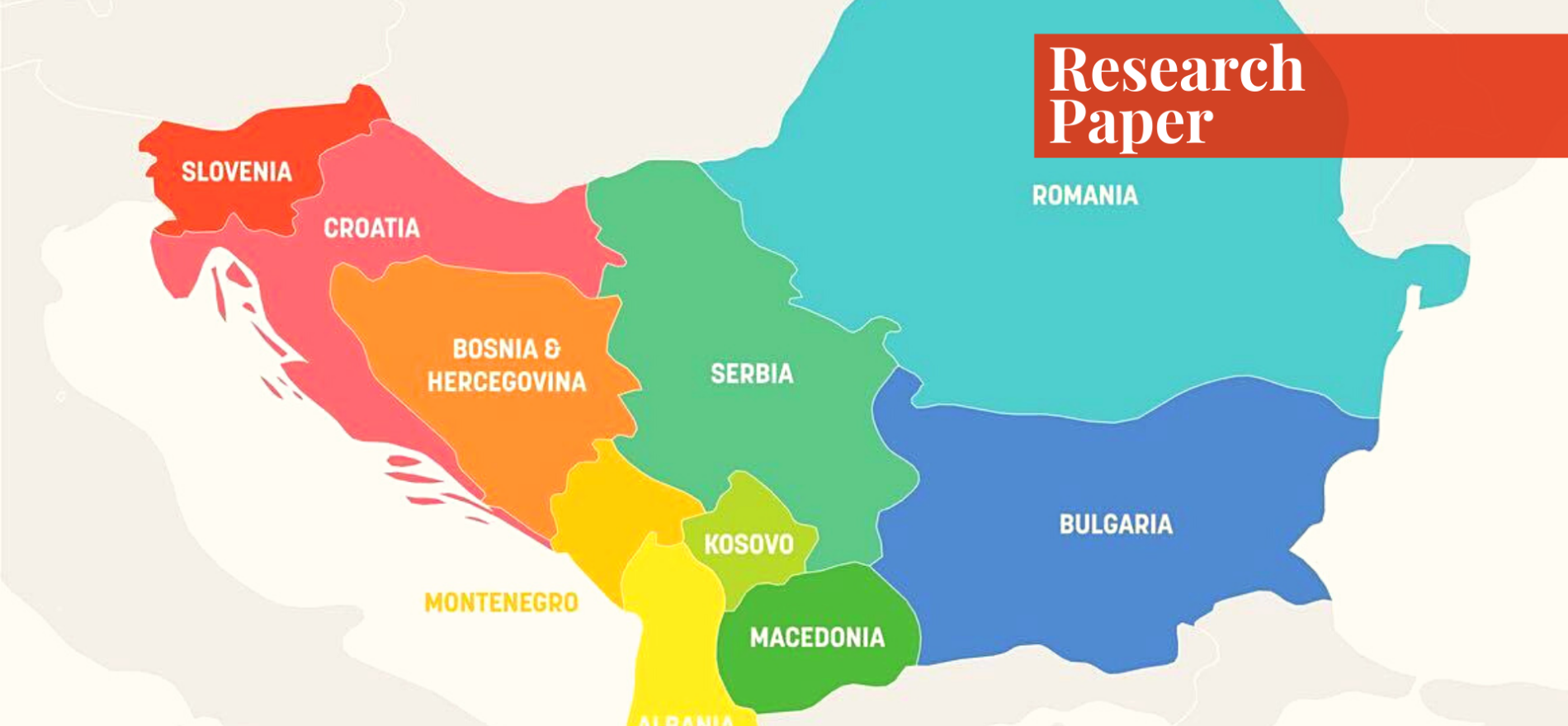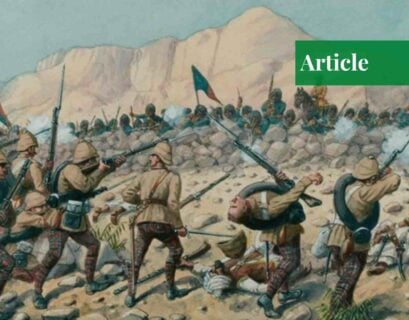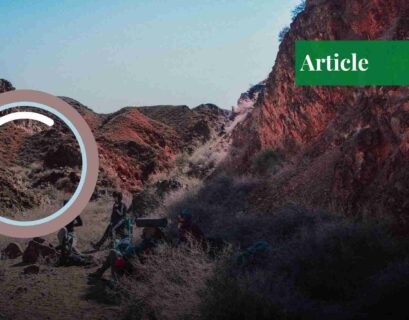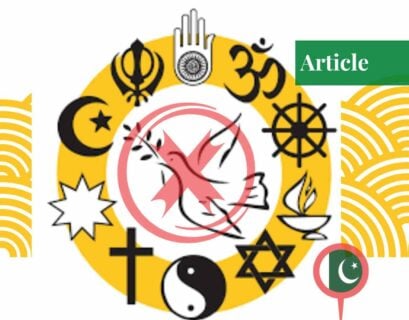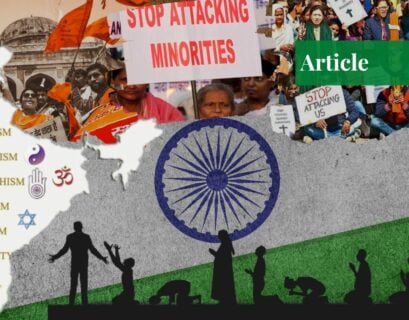Hurain Sheikh is a Pakistan-born Canadian. She has international work experience in West Canada, Dubai, and Islamabad. She is currently refining her experience by pursuing a degree in political science.
Introduction
In the present day, the little that is known about the Balkans refers to a geographical region that encompasses Eastern Europe, which is considered violent and causes questions to be raised regarding the national identities of its bordering states.1 Who are the “Balkans”? What does it mean to be a “Balkan”? It is important to consider the states encompassing the Balkan region and analyze the root cause of ethnic conflict in the Balkans.
Greece, Albania, North-Macedonia, Croatia, Bulgaria, Romania, Kosovo, Slovenia, Serbia, Montenegro, Moldova, Bosnia-Herzegovina, and “European Turkey” were once unified during the Roman Empire and then the Ottoman Empire. However, the rise of nationalism in Western Europe in the 18th and 19th centuries influenced and created divisions among the various groups within the Ottoman Empire.
These Balkan countries succeeded in overthrowing the rule of the Ottoman Empire by establishing their own independent nation-states, but before long, these independent countries were eager to acquire more land and fought amongst one another towards these goals. This led to a series of wars and ethnic cleansing, such as during the First and Second Balkan Wars and the final Yugoslav War.
It is important to consider that previous Balkan historians had adopted a hegemonic, centralized narrative, by eliminating their distinctive multicultural identity and historical link with the Ottoman empire, as to be considered more “European”.2
Therefore, in this paper, by using Busbecq’s “Turkish Letters”, Mazower and Wachtel’s neutral historical approach towards Balkan nationalism, and Joe Sacco’s micro-level analysis in the city of Goražde, the presence of diverse groups during the Ottoman Rule, the rise of nationalism within these diverse groups, and the implications of nationalist politics on the ordinary people, are discussed.
The Ottoman Empire in Light of Busbecq’s Letters

During the 16th century, the Ottoman Empire was reputed as “villainous” and “savage” by its European counterparts. The empire was regarded as an unstoppable enemy that had conquered the Byzantine Empire by establishing itself in Constantinople and was to campaign against other European empires located in the Northern Balkan region.
Ogier Ghiselin de Busbecq, an ambassador for the Austrian monarch, Ferdinand, was sent to the Ottoman court during Sultan Suleiman the Magnificent’s reign to pacify relations between the East and West, and to provide politically relevant information regarding the Ottoman expansion.
In his detailed accounts, “The Turkish Letters”, we learn the importance of human talent, strict discipline, religion, and the presence of tolerance towards other religions during the Ottoman rule. However, due to his prejudices against the “Turks” and preference towards his own European empire, Busbecq fails to further explore the upward social mobility and religious freedom given to non-Muslims.
Merit over Birthright
Through Busbecq’s writing, there are many indications of the Ottomans valuing human capacity (merit) over the birthright. Individuals had to prove their worth through the position they held in civil services, which was achieved through merit in their capabilities and strict discipline. Therefore, said positions “and offices are filled by men capable of performing them”.3 Individuals were either sometimes gifted prodigies or, as Buasecq states, “product of good training, and constant toil and zeal” and hence, the occupiers of high positions were “often the sons of shepherds and herdsmen, and, so far from being ashamed, they make it a subject of boasting”.4
The rationalization is that qualities and intellect do not descend from father to son, nor does discipline. This was noted during harsh campaigns when Turkish soldiers made do by eating low quantities of porridges, dry fruit, powdered meat, or dead horse meat on lucky occasions. It is with “patience, sobriety, and economy that the Turks struggle against the difficulties which beset them and wait for better times,” noted Busbecq.
Furthermore, the military supplies they make use of are either outdated or defective, but “they bear it with equanimity and think only a coward finds faults with his arms”.5 Their crimes are severely punished through flogging for basic offenses, or dismissal from the army—which is considered worse than death as they are “deprived of the badges […] banished to distant garrisons on the farthest frontiers.”6 These qualities were missing in their European counterparts as they lacked tolerance, depleted their own resources, and did more harm to themselves by enjoying luxuriously.7 Thus, contributing to the success of the Ottoman rule.
Importance of Islam
The importance of Islam instilled this discipline and was the main guiding force to expand the Turkish empire. The Koran was used as the basis for most policies and daily affairs.8 The scripture determined the time of day according to prayer, “thus the Turkish day is divided into four periods”.9 Moreover, it provided religious toleration for “the people of the book”- the Christians and Jews.
During a period when Christian groups were against one another and Jews were hunted, the Ottomans provided shelter for religious minorities. As noted by Busbecq, “there is no village, town, or city any size in which there are not some Janissaries to guard the Christians, Jews, and other helpless folks from the attacks of malefactors.” It was customary for various ethnic groups, such as “Turks, Greeks, Jews, Hungarians, Dalmatians, and many others,” to inhabit the Turkish cities.10
Busbecq notes that as a result of this, many of these ethnic groups adopted similar cultural and religious values, such as the celebration of Easter and the “Turks have even wished to have their sons secretly baptized.” Therefore, we can see that there was a sense of heterogeneous mixture and even adoption of cultural practices within the Ottoman society. However, it is important to note that ethnic toleration did not always equate to rectitude.
Second-class Citizenry
For all the fairness the Ottomans governed with, religious minorities were “categorized as second-class citizens”.11 Christians would face discrimination as their windows would be barred due to complaints of non-privacy from their Turkish neighbors. They were also a source of gain for the Ottomans through slavery. After successful conquests, Turkish soldiers brought captives in exchange for monetary reward, “for an ordinary slave is valued at forty or fifty crowns, while, if the slave has the additional recommendation […] he is worth twice as much.”12
Another form of servitude was seen in the practice of “Devshrime” – child recruitment. It was a practice of forcibly taking young Christian boys from their homes to serve the Sultan.13 Busbecq notes, “so from time to time we were met by gangs of wretched Christian slaves of every kind who were being led to horrible servitude”. However, Busbecq fails to see that this concept of “slavery” was not only accepted but sometimes even welcomed by the religious minority, as it guaranteed a life of luxury for their sons due to training in military or administrative affairs because “from there, if they had talent and drive, they could rise through the ranks.” 14
This depicts Busbecq’s own biases and restrictive beliefs towards the Ottomans, which can prove the accounts to be restricted in nature. Turkish families also participated in this system by bribing their Christian counterparts to shelter their sons under the pretense of being Christians to attain the same military and bureaucratic training towards upward social mobility. Therefore, this concept of “child slavery” was somewhat beneficial for Balkan Christians and Muslims as this led towards higher positions of janissaries or grand viziers – as seen with Roostem Pasha and Ali Pasha.
Religious Minorities Within the Ottoman Empire
As praiseworthy are Busbecq’s accounts of the Turkish empire are, his letters depict biases towards Christians living under Ottoman rule. Moreover, they lack information about other religious groups, such as the Jews. Other ethnic groups were indeed highly taxed and were subjected to “humiliating laws that did not apply to Muslims”, however, these groups were sheltered during difficult times and were not forced to convert.15
Those who saw an opportunity in converting did so for social mobility or materialism. Yet, those who wished to remain loyal to their religion did so under the “Millet system” – a religiously defined community. In such a system, religious establishments were exempt from paying taxes, and clergies were given the power to govern said communities. The clergies ensured that the members of these religious classes paid their taxes and “caused as little trouble as possible.”16
The Balkan Christians, especially Bogomils, benefited enormously from this system, which ensured the long-term survival of Orthodox communities. They were given more autonomy and power during the Ottoman rule than they had during the Byzantine Empire or from previous native rulers. To elaborate, the Bogomils were previously highly taxed by previous Christian leaders and could have experienced ethnic cleansing during the “Reconquista of Spain”. This resulted in a lack of resistance or protest from ethnic minorities towards their Ottoman rulers.
Limitations of Busbecq’s Letters
Busbecq’s “Turkish Letters” are interesting as we learn the reasons for the Ottoman Empire’s accomplishments and give us an in-person account of their culture and traditions. Hence, providing us with some clarity towards the Ottomans, who are sometimes ill-regarded even today. Nevertheless, as these accounts were used for political goals, consequently, these letters are limited towards Busbecq’s own presumptions and biases against Turkish rule.
The letters were not written without a sentiment as they do not truly acknowledge the personal accounts and sentiments of other religious groups. This is to say that Muslims were indeed given higher positions and priority in this empire; however, religious minorities were arguably treated better during the Ottoman rule during this period. Thus, ensuring the long survival of the Balkan Christians and their upward social mobility, which Busbecq fails to acknowledge.
Birth of Nationalism
On the subject matter of Balkan nationalism, both Mark Mazower, the author of “Balkans: A Short History”, and Andrew Wachtel – the author of “The Balkans in World History” – adopt a neutral approach towards these historical accounts and coin it as being western-influenced, elite-driven, and a cause for mass violence to form the distinguished Balkan nation-states.
However, contrastingly, while Mazower’s reading makes emphasis towards the ethnic-based violence the Balkan people experienced due to nationalists, which further assimilated them towards the Western European state model. Wachtel’s argument seems to highlight the role of these nationalists towards creating these distinguished nation-states, which has eliminated the multi-cultural diversity of the Balkans and caused an ethnic conflict.
Western European Influence
The emergence of nationalism in the Balkans was notably due to the western influence over the local elite intellectuals. What used to be a multi-ethnic region with shared roots, co-existence, and tolerance for one another due to it being ruled over by the Byzantine Empire and then the Ottoman Empire, which did not partake in “ethnically based polities”, experienced a change by “orthodox intellectuals […] spreading the ideas of European Enlightenment”, writes Mazower. 17
Wachtel, similarly, agrees that this “multi-layered” society only entered into conflict because the “locally born but European-educated elites made attempts to superimpose Western European ideas of nation and nation-state”.18 However, while the West experienced this political shift gradually from the Middle Ages to the 18th century, in the Balkans, it was much more swift and compressed. This resulted in excessive violence during the 19th and 20th centuries “under the eyes of Western Europeans who had forgotten, or who choose to overlook,” suggests Wachtel, reputing the Balkans as “semi-European savages.”19
While both authors agree on the cause of nationalism in the Balkans, Mazower focuses more on historically linking the Balkans with Europeans as being taught (influenced) by them. In contrast, Wachtel’s position seems to entail that this European-influenced nationalism has corrupted the multi-cultural identity of the Balkans.
Mazower: Implications on the Common People
The Balkan peasantry did not identify themselves with a particular cultural group based on patriotism. For them, questions regarding identity were based on ethnic and religious beliefs that did not equate to intolerance or violence. Rather, the presence of these diverse groups influenced conversions and interfaith marriages for upward social mobility.
This can be noted with Dalmatian girls preferring to marry a “Turk” rather than low-status shepherds, and converting to pursue annulment from unwanted marriages and even to gain a better social status as seen during the Ottoman Empire. Moreover, as noted from the travel accounts of H.N Brailsford, an international activist, the sense of national identity did not exist within the peasantry.
For example, when H.N Brailsford, in 1905, asked some local boys about the builders of the Bulgarian Tsar fortress, they replied “our grandfathers”. When asked to elaborate further on their nationality, “were they Serbs or Bulgarian or Greeks or Turks?” the boys claimed, “they were Christians”.20 This depicts the limitations and unawareness of local’s knowledge regarding national beliefs and identities. For them, ethnic divisions were based on religious beliefs rather than patriotic sentiment, which was contrasting to the European-educated elites who wanted to establish a distinguished national identity as noted by Mazower.
Wachtel: Implications on the Common People
The same sentiment is emphasized in Wachtel’s book, The Balkans in World History; he explains that the general population had adapted to coincide with one another by adopting similar religious beliefs and cultural characteristics, especially over the course of Ottoman rule. However, Wachtel makes emphasis on the difficult task of nation-building, that Balkan nationalists had, with a population that did not see the benefit of a separate nation-state, “which would lead one or a series of heroic but futile rebellions against the Ottomans.”21
However, this resulted in polarizing the civilians and their Ottoman leaders, which eventually led rebellion leaders to use fabrication and imagined narratives to invoke national sentiment among the general public and to gain aid from the great powers; “Independence was achieved only gradually,” writes Watchel.22
By the end of the 19th century, separate nation-states had been established in the Balkans but another challenge the nationalist leaders faced was nationalizing and Europeanising the heterogeneous and agrarian characteristics of the new Balkan States. Wachtel gives the example of Vuk Karadžić “who approached a man and asked him to say who he was” to which after numerous tries, the man amended by stating, “Oh, that’s what I forgot about; we are Croatians and speak Croatian.”23
This depicts the difference between the sentiments of the general population and “enlightened interlocutors” who were exasperated due to the unawareness of the majority. Therefore, to successfully create uniform nation-states, it was important to use ethnic-based violence – despite the fact that it resulted in an ethnic conflict – in attempts to eliminate the Balkans’ diverse characteristics by the 20th century.
Comparing and Contrasting Mazower and Wachtel
Both authors agree that the main goal of the Balkan nationalists was to produce a homogeneous sentiment and state within a heterogeneous population. However, using primary sources, Mazower makes more references towards Balkan nationalists’ ethnic-based violence and the general population sentiments towards it. This can be noted in his example of Macedonia that encompassed “a bewildering mix of different peoples,” which was the cause for “revolutionary violence” and ethnic cleansing by the formation of pro-national schools, churches, and maps.
This political instability, caused by the revolutionaries and the repressive nature of the Ottomans, resulted in the immigration of the peasantry to different parts of Europe and across the Atlantic. The ones who remained were victims of continuous violence and instability. Mazower writes, “the unfortunate peasants themselves were concerned more to regain some stability in their lives than to die for nationalism.”
He then narrates a story of a peasant who became Bulgarian and quotes, “if we have to be Serbs no problem. But for now, it is better for us to be Bulgarian”.24 This depicts the continuous suffering of the general population who were the victims and pawns of nationalists’ homogenous sentiment.
In contrast, Wachtel seems to take a more general approach by writing that the individuals who did not fit the uniform state model would become “national minorities” and would be treated as “second-class citizens at best, and at worst, forcibly assimilated, expelled, or killed.”25 This is because his focus is more towards highlighting the role of national activists in successfully creating distinguished nation-states in the Balkans, rather than on the use of violence during the ethnic conflict.
Therefore, while both authors acknowledge the similar reasons for the occurrence of nationalism, Mazower’s book takes a more reflective approach by emphasizing the general population who experienced violence at the hands of Balkan nationalists, political leaders, and the great powers, in order to transform multi-ethnic communities into mono-ethnic states—aside from Yugoslavia that had remained multi-national until 1940.26
In contrast, Wachtel’s book points towards the culturally diverse characteristics of the Balkans as the reason for inevitable ethnic conflict to occur. For him, the Western Europe-inspired model of state, which the nationalists successfully produced through the same violence, has essentially destroyed the Balkans’ multi-cultural diversity.
While this does cement the Balkans as more European, despite the ethnic conflict, one must ask whether the adoption of a homogeneous model was necessary for a multi-ethnic region? In this context, these regions could have adopted multi-national political regimes to preserve stability and peace. The Balkan multi-cultural diversity may not be lost but has been corrupted due to nationalism.
Joe Sacco’s Take on Nationalist Politics in the Balkans
The Bosnian War of 1992 was another example of these nationalist-based politics that encouraged ethnic conflict within the Balkans, which is still remembered for the multiple crimes that had transpired on an ethnic axis. To this day, the remains of the victims of this war, particularly of the 8,000 Bosniaks massacred in Srebrenica in 10 days, are still being recovered.
To give an overview, this ethnic conflict was the result of extreme nationalism that had devastated the lives of many Balkans in the region and had resulted in many causalities due to ethnic cleansing and human displacement.27 Therefore, condemning the political leaders and their policies during this event was necessary, but it also challenges us to question the sentiments, views, and actions of this multi-ethnic community towards nationalists’ ideologies. Additionally, how did it affect the lives of the common people?
Joe Sacco’s micro-level analysis in the city of Goražde is of interest to us because we get firsthand accounts of how things transpired in a unified community to form ethnic-based divisions, leading to the use of extra-lethal violence and the presence of inter-ethnic and intra-ethnic conflict among the Balkans.
Moreover, depicting the complexities of human behavior in a situation of ethnic-based conflict. Contrastingly, however, Sacco’s micro-level lens is limited to the accounts of the individuals present in Goražde, particularly Muslims. Therefore, we do not know the sentiments of the Serbians, especially those who left the city and made use of extra-lethal violence against the Muslims.
The Transformation from Unified Diversity Towards Ethnic Divisions
Through various perspectives in Sacco’s book – “Safe Area Goražde: The War in Eastern Bosnia 1992-95” – we get the sense that ethnic-based divisions did not always exist up until 1992. This can be accounted for by Edin who claims that he had spent a good childhood due to the lack of “distinction between Serb, Croat, and Muslim children,” which led towards inter-communal fraternizing such as during “fishing, in forests, on the playground, the stadium.”28 This inter-ethnic bonding even carried over till his adult life as he and his Serbian friends would party together.
Therefore, we can already perceive that ethnic-based divisions did not always exist. This could be due to Josip Broz Tito’s policies towards maintaining “brotherhood and unity” in Yugoslavia by repressing ethnic-based nationalism. However, after his passing, nationalist politicians exploited the grievances of the people, which led to separation. It is noted that after Slobodan Milosevic came into power in Serbia, “he had exploited and encouraged Serb nationalism,” which influenced all Serbs, even those in “other republics.”29
Through this, it can be assumed that the cause of polarity between the Serbs and Muslims may be due to the rhetoric of elite politicians. However, if grievances did not already exist, sentiments could not have been exploited, which were present in the Serbian population since World War II, as seen with the older generation. While Sacco’s book gives us personal accounts of the experiences and theories of the Muslims towards this ethnic divide, we are limited to their accounts. His book does not provide us with the Serbian’s sentiments towards this subject.
Shifting Towards Ethnic Divisions
Whatever the reason was for this ethnic divide in this once multi-ethnic community, it was strong enough to create a sense of threat that needed physical boundaries. This can be noted through Eiden asking a “good Serb friend” of primary school if they “could go out together” to which his neighboring friend replied “I can’t go with you. My people will point at me.”30 We can understand here that something had shifted, and it was strong enough for the inter-communal relations to disintegrate.
This division on an ethnic basis had been first cemented by coffee bars and eventually led toward “a lot of Serbs putting their families on buses to Belgrade” as noted by Bahra. These accounts through Sacco’s micro-lens depict the disintegration of inter-ethnic relations that would have otherwise gone unacknowledged.
However, this limited approach towards the Muslims’ experience raises the question as to why the Serbians needed to physically divide themselves? Why did they start harboring feelings of fear, resentment, and hatred? These questions cannot be answered through Sacco’s lens.
Perhaps, it could be the feeling of paranoia, which is noted by Eiden’s Serbian friend who had claimed that they could not be on friendly terms as the Muslims “will try to kill the Serbs in Bosnia and make it a Muslim country.”31 However, this does not give the reason for their departure nor does it explain the atrocious crimes experienced by the Muslim population.
Ethnic-based Violence
These feelings of anger and resentment translating towards ethnic-based violence are noted through Izet’s account of how his once Serbian neighbor, who had spent a lot of time with his youngest son, attacked them.32 This violence was not limited to just shooting at people and burning of the property but led towards extra-lethal violence—going beyond what is considered necessary.
Sacco’s book reveals the use of such methods through mutilation by cutting of genitals, rape of captive women, and massacring the once Muslim neighbors. However, these personal accounts for the use of such methods do not elaborate as to the reasons for their use by Bosnian Serbs. If the goal was to ethnically cleanse the Muslims from this territory, then why the use of such violence? As visually rich as Sacco’s book is in proving the existence of extra-lethal violence, it does not explain the reasoning for their use. Nevertheless, this is not to say we should categorize all Serbians as “antagonists” since there is evidence of inter-ethnic rescue as well.
Inter-ethnic Rescue and Intra-ethnic Conflict
The subject of inter-ethnic rescue is a key subject noted through Sacco’s lens, as it depicts the presence of individuals (Serbs) who did not succumb to the ideals of their political leaders or fellow man. This can be noted through Rasim’s account of the Serbian soldier and the Serbian woman who had both rescued him from punishment and death inflicted by other Serbians due to their familiar association with the Muslim man.
These acts of rescue within the Balkans emphasize the resistance towards categorizing all individuals of a certain ethnic group as “perpetrators” in a conflict. Additionally, during both occasions, there are occurrences of intra-ethnic conflict and pressure as well. It is noted that fear and pressure were being used towards fellow comrades to persecute the Muslims.
This concept of intra-ethnic and inter-ethnic violence existing simultaneously can also be noted through the character of Veljko who was first harassed by the Serbians for not behaving like a nationalist and then by the Muslim refugees for being Serbian.33
The presence of this pressure and violence during the conflict, captured by Sacco’s lens, is important as it shows that the complexity of ethnic-based violence was not just limited to one group in the Balkans but impacting all individuals of the state. Therefore, emphasizing the importance of judging people by their actions rather than ethnicity. Additionally, his lens reveals that this ethnic conflict has resulted in hardening friendly relations among the Balkans for years to come and even decades.
Analysis on Nationalist Politics in Goražde
By looking at this ethnic conflict through Sacco’s micro-lens, we have come to discover certain dynamics and complexities of human behavior that would have gone unnoticed or remained mysterious to us—such as the sudden change in inter-communal relations among the Balkans, the existence of extra-lethal violence, and intra-ethnic violence, which would not have been acknowledged on a macro scale.
These complexities may lead to further queries, such as the reasoning for the Serbians departure and their use of extra-lethal violence. However, Sacco’s book has emphasized the importance of using different methods to understand these historical conflicts, which can prevent their re-occurrences and can encourage political leaders to adopt better policies to build favorable nation-states.
Final Thoughts
By understanding the historical timeline and various accounts towards the formation of Balkan states, we can observe how a once unified heterogeneous community, that lived harmoniously during the Byzantine and Ottoman Empire, fell victim to western-influenced nationalism and nationalist politics, which directly impacted the livelihoods of the common people.
This brings us to question the unheard and ignored accounts of the general population who are impacted by elite-driven political actors and their nationalist, uncompromising policies. Moreover, how the importance of forming national identities within these nation-states led to the politicization and exclusion of the “other” identities. Therefore, leading to an ethnic conflict in the Balkans due to the narrative of an “us versus them.”
Finally, through the history of the Balkans, we learn how these nationalist policies and ideologies are passed on from generation to generation in an endless cycle of division, ethnic conflict, and resentment. This is even obvious in the current political affairs and the general attitude of the different groups towards one another within the Balkan region. Thus, leading to their ill-reputation from their western counterparts.
Endnotes
1 Dr. Max Bergholz, “What are the Balkans?” (History of the Balkans, Montreal: Concordia University, 2020).
2 Dr. Max Bergholz, “Historiography: Mazower versus Wachtel on Nationalism in the Balkans” (History of the Balkans, Montreal: Concordia University, 2020).
3 Ogier Ghislain de Busbecq, The Turkish Letters of Ogier Ghiselin de Busbecq trans. Edward Seymore Forster (Baton Rouge: Louisiana State University Press, 2010), 60
4 Busbecq, The Turkish Letters, 60
5 Busbecq, The Turkish Letters, 114
6 Busbecq, The Turkish Letters, 155
7 Busbecq, The Turkish Letters, 112
8 Busbecq, The Turkish Letters, 62
9 Busbecq, The Turkish Letters, 20
10 Busbecq, The Turkish Letters, 14
11 Dr. Max Bergholz, “Turkish Letters: Lecture Notes,” (History of the Balkans, Montreal: Concordia University, 2020).
12 Busbecq, The Turkish Letters,102
13 Wachtel, The Balkans in World History, 55
14 Ibid.
15 Ibid.
16 Ibid.
17 Mark Mazower, The Balkans: A Short History, (New York: Modern Library, 2002), 70.
18 Wachtel, The Balkans in World History. 15.
19 Wachtel, The Balkans in World History. 66.
20 Mazower, The Balkans: A Short History, 40.
21 Wachtel, The Balkans in World History, 72.
23 Wachtel, The Balkans in World History, 79.
24 Mazower, The Balkans: A Short History, 99.
25 Wachtel, The Balkans in World History, 68.
26 Mazower, The Balkans: A Short History, 125.
27 Dr. Max Bergholz, and Concordia University, “War in Bosnia-Herzegovina” (History of the Balkans, Montreal: Concordia University, 2020).
28 Joe Sacco, Safe Area Goražde: The War in Eastern Bosnia 1992-95 (Seattle, WA: Fantagraphics Books, 2001), 18
29 Sacco. Safe Area Goražde: The War in Eastern Bosnia 1992-95, 36
30 Sacco, Safe Area Goražde: The War in Eastern Bosnia 1992-95, 39
31 Sacco, Safe Area Goražde: The War in Eastern Bosnia 1992-95, 40
32 Sacco. Safe Area Goražde: The War in Eastern Bosnia 1992-95, 78
33 Sacco, Safe Area Goražde: The War in Eastern Bosnia 1992-95, 156
Bibliography
- Bergholz, Max. and Concordia University. “Historiography: Mazower versus Wachtel on Nationalism in the Balkans” History of the Balkans, Montreal: Concordia University, 2020.
- Bergholz, Max. and Concordia University. “The Future of the Balkans” History of the Balkans, Montreal: Concordia University, 2020.
- Bergholz, Max. and Concordia University. “Turkish Letters: Lecture Notes.” History of the Balkans, Montreal: Concordia University, 2020.
- Bergholz, Max. and Concordia University. “War in Bosnia-Herzegovina” History of the Balkans, Montreal: Concordia University, 2020.
- Bergholz, Max. and Concordia University. “What are the Balkans?” History of the Balkans, Montreal: Concordia University, 2020.
- Busbecq, Ogier Ghislain de, and E. S Forster. The Turkish Letters of Ogier Ghiselin De Busbecq, Imperial Ambassador at Constantinople, 1554-1562: Translated from the Latin of the Elzevir Edition of 1663.Baton Rouge: Louisiana State University Press, 2010.
- Mazower, Mark. The Balkans: A short history. New York: Modern Library, 2002.
- Sacco, Joe. Safe Area Goražde: The War in Eastern Bosnia 1992-95. Seattle, WA: Fantagraphics Books, 2001.
- Wachtel, Andrew. The Balkans in World History. The New Oxford World History. Oxford: Oxford University Press, 2008.
If you want to submit your articles and/or research papers, please check the Submissions page.
The views and opinions expressed in this article/paper are the author’s own and do not necessarily reflect the editorial position of Paradigm Shift.
